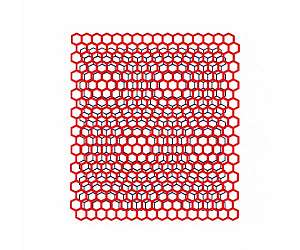Northrop Grumman has been awarded a contract by Airbus Defence and Space for the design, development and production of 24 ship sets of solar arrays to support the OneSat satellite product line. The solar arrays will power the OneSat communication satellites in geosynchronous orbit.
The solar array technology features the Northrop Grumman Compact Telescoping Array (CTA) design that utilizes a telescoping boom system to deploy an accordion-folded flexible solar array blanket. The solar arrays are a 20kW-class system that deploys over 18 meters in order to provide energy to OneSat.
“The technology used for our solar arrays allows for an efficient launch and is one of our many company-designed advanced components that enable satellites of all classes to perform their missions,” said Frank Bernas, vice president, space components and strategic businesses, Northrop Grumman.
Northrop Grumman’s CTA system was developed for missions like OneSat that require extremely compact stowage volume for spacecraft launch while remaining lightweight. Northrop Grumman’s CTA creates enough space to allow for three full spacecraft to be launched aboard a single rocket.
The use of Northrop Grumman’s solar arrays to support the OneSat product line builds on the company’s history of mission-enabling capability through solar technology. These technologies are used to support various commercial and civil space programs, including the commercial resupply of the International Space Station through the company’s Cygnus spacecraft, several of its commercial satellites and NASA’s Insight and Phoenix Mars Landers.
In addition to the solar arrays, Northrop Grumman will also provide heat pipes that are an essential element for payload thermal management as well as propellant tanks in support of a mono-propellant propulsion system for OneSat.
Related Links
Northrop Grumman
All About Solar Energy at SolarDaily.com
|
We need your help. The SpaceDaily news network continues to grow but revenues have never been harder to maintain. With the rise of Ad Blockers, and Facebook – our traditional revenue sources via quality network advertising continues to decline. And unlike so many other news sites, we don’t have a paywall – with those annoying usernames and passwords. Our news coverage takes time and effort to publish 365 days a year. If you find our news sites informative and useful then please consider becoming a regular supporter or for now make a one off contribution. |
||
|
SpaceDaily Contributor $5 Billed Once credit card or paypal |
SpaceDaily Monthly Supporter $5 Billed Monthly paypal only |
|

![]()
‘Twisting’ atomic materials may convert light into electricity
Riverside CA (SPX) May 01, 2021
A pair of physicists at the University of California, Riverside, are aiming to convert light falling on atomically thin semiconductor materials into electricity, having received more than $582,000 in funding from the U.S. Department of the Army.
Nathaniel Gabor and Vivek Aji, both associate professors of physics and astronomy, will focus on how the fundamental science of light and its interaction with matter enables new sensing capabilities in layered and twisted vertical structures of stacked mon … read more
